At Pacific Pain Medicine Consultants in Oceanside and Encinitas, patients are cared for by a team of board-certified physicians. Led by Dr. Brooke Towne, a fellowship-trained anesthesiologist in interventional pain medicine, the team combines advanced training with minimally invasive options for a wide range of conditions. With expertise in conditions such as spasticity, they help patients regain comfort and improve their function.
What Is Muscle Stiffness?
Muscle stiffness often results from overuse, injury, or lack of movement. It creates a feeling of tightness that usually improves with stretching or gentle activity. While uncomfortable, stiffness does not involve abnormal signals from the nervous system. In many cases, stiffness resolves with time, rest, or basic physical therapy.
What Is Spasticity?
Spasticity develops when nerve pathways between the brain and muscles are disrupted. This miscommunication causes muscles to tighten involuntarily. Common causes include stroke, multiple sclerosis, cerebral palsy, or spinal cord injury. Unlike stiffness, spasticity can lead to muscle spasms, fatigue, and difficulty with daily movement. Without treatment, it may contribute to joint problems or long-term mobility issues.
Key Differences Between Spasticity and Stiffness
Although both conditions involve muscle tightness, the differences are important to note:
- Cause of symptoms: Stiffness stems from muscle strain or inactivity. Spasticity comes from nervous system injury.
- Duration: Stiffness often improves with time. Spasticity tends to persist and may worsen without treatment.
- Associated problems: Stiffness rarely causes spasms. Spasticity often leads to cramps, pain, and difficulties with movement.
- Treatment needs: Stiffness may improve with stretching. Spasticity often requires medical intervention from specialists.
Recognizing these differences ensures you receive the right evaluation and care.
Treatment Options for Spasticity in Oceanside
Spasticity can be managed with a range of approaches depending on its cause and severity. Treatment may include oral medications, such as muscle relaxants, and botulinum toxin injections to reduce overactive muscles, as well as structured physical therapy programs that improve flexibility and function.
At Pacific Pain Medicine Consultants, advanced therapies such as ultrasound-guided injections for precision targeting, nerve blocks to disrupt pain signals, or spinal cord stimulation for long-term relief may be used to ease symptoms. By combining medical expertise with personalized care plans, the team helps patients reduce spasms, improve movement, and restore quality of life.
Regain Comfort and Control
Living with uncontrolled muscle tightness can be frustrating, but expert care makes a difference. For patients in Oceanside and Encinitas, spasticity treatment is available close to home. Contact Pacific Pain Medicine Consultants in Oceanside, CA at (760) 753-1104 to schedule an appointment and take control of your symptoms today.

